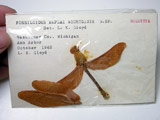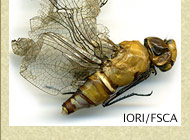
Plan B
Gainesville, Florida, April 20-27, 2010
I spent a week in Florida to seek dragonflies but oddly enough, I spent the week almost entirely indoors. I stayed in Gainesville, home of the International Odonata Research Institute at the Florida State Collection of Arthropods.
Over the course of this project I have been focusing on getting live specimens. It made the most sense, if you wish to show what a living dragonfly looks like you should have a live dragonfly to draw from. But I knew I could not possibly collect every thing I needed for the book. Luckily as an illustrator, I can work from different reference sources, combining them to make a consistent presentation.
Live dragonflies are best. I photograph them and make scans, and usually I get to retain the specimen to examine further. But absent a live specimen, I can use photographs and images that others have made. These can be useful to see living color and pattern. For accuracy of structure, proportion, and anatomical detail, I can reference preserved specimens. For this purpose, I went to Florida to access the IORI/FSCA collection of Odonata, one of the largest in the world. With over 300,000 specimens, it seemed like a good place to start.
I flew into Jacksonville, rented a car and drove to Gainesville. I wasn't going to meet with Bill Mauffray, the curator of the collection until the next day so I pulled out a map to look for a place to stretch my legs and ended up at San Felasco Hammock State Preserve. I saw a few dragonflies and butterflies, but nothing unusual. It clouded up and I headed back to the motel for the night.
The next morning, Bill showed me around the collection then left me to my work. Following my species list, I pulled out drawer after drawer of specimens. The names of the collectors were so familiar, the pioneers of American odonatology, the namers of species. Some specimens were decades old, 30, 40, 50 years and some, unfortunately looked it. A dried dragonfly is a fragile thing. I gravitated to newer specimens when possible. They tended to be better preserved, often with more pattern. By far I scanned more of Ken Tennessen's specimens than those of any other collector. His extensive travels, active net, and unusual care taken in preparing the specimens, made them a pleasure to examine.
Over the week I scanned and photographed about 300 dragonflies. It was slow. It was not fun. The first couple of days I worked at the collection, but knowing weekend access would be limited I asked Bill if I could take specimens back to the motel to do the imaging. This worked better for me, I could go late into the evening without worrying about being locked in and I could flop on the bed whenever I needed to. The weather for the week was hot and sticky but I only went outside to exchange specimens and to get something to eat. Gliders (Pantalas) flew over the neighboring Burger King parking lot. With the occasional downpour outside, I slowly worked my way through my list. Still at the end of the week there were a few names left, mostly females that the collection did not have. In a couple of cases there was a specimen but not in a usable condition. I'll need to track down more specimens elsewhere.
While I enjoyed seeing species I have not seen in life, the work was grueling and monotonous. Being stuck inside a motel for days was maddening. However it was undoubtedly one of the most productive and important weeks of the project.
Many thanks to Bill Mauffray

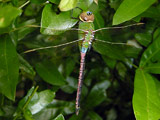
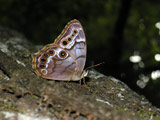
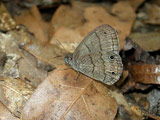
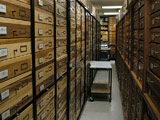
Specimen drawers
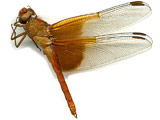
Specimen of Libellula gaigei
